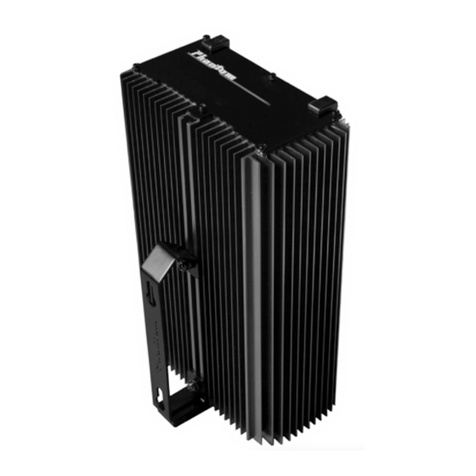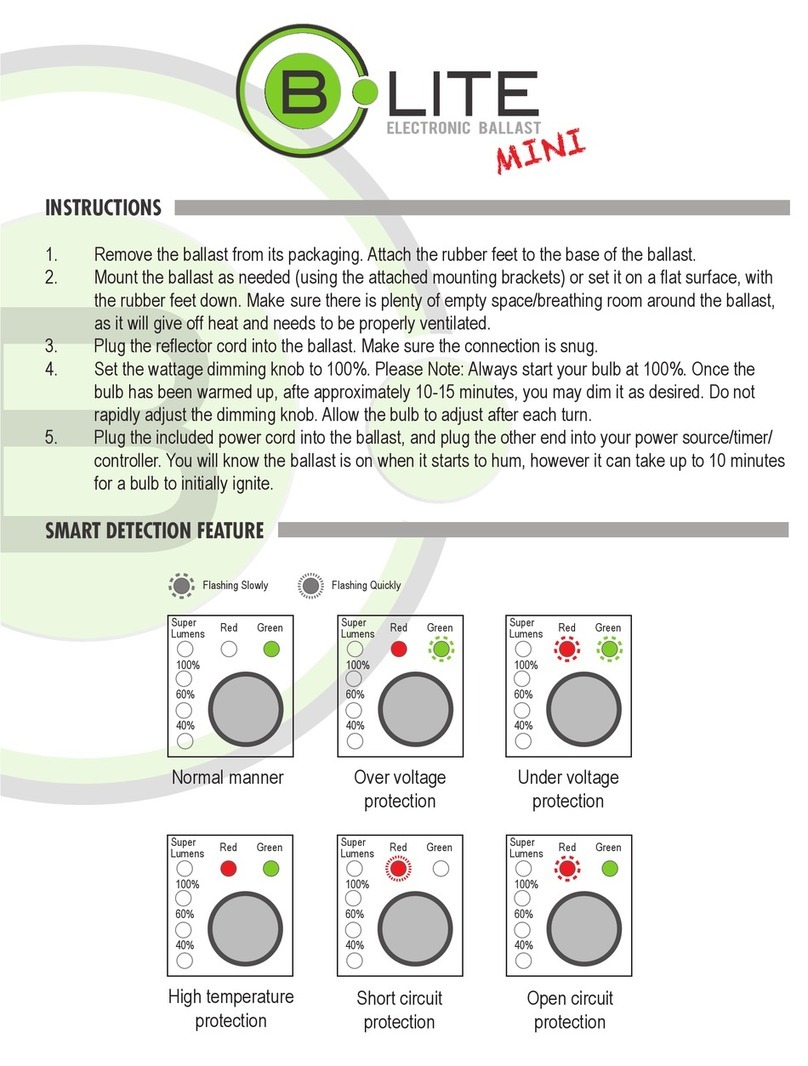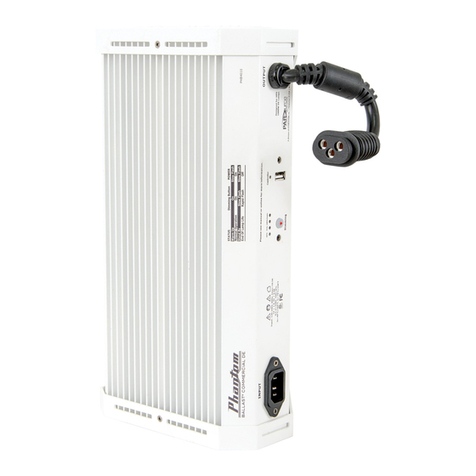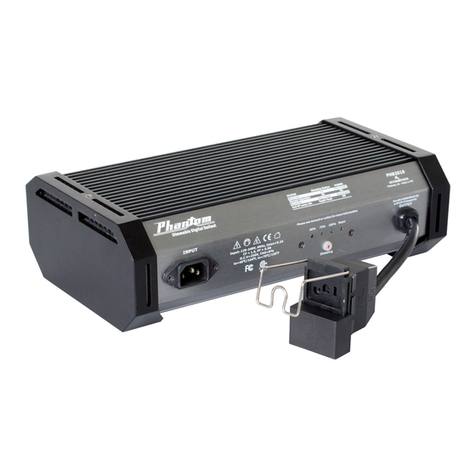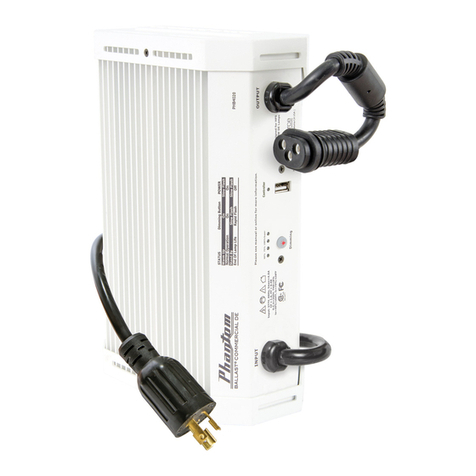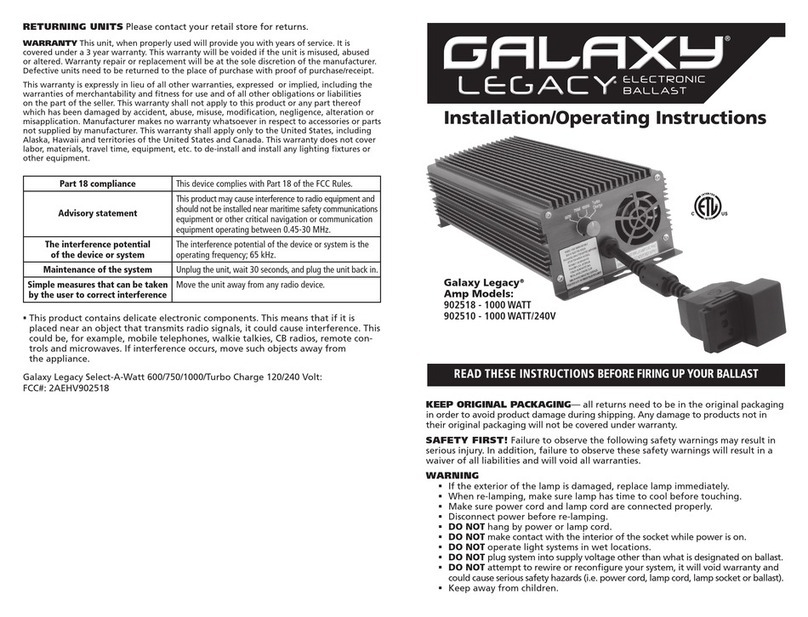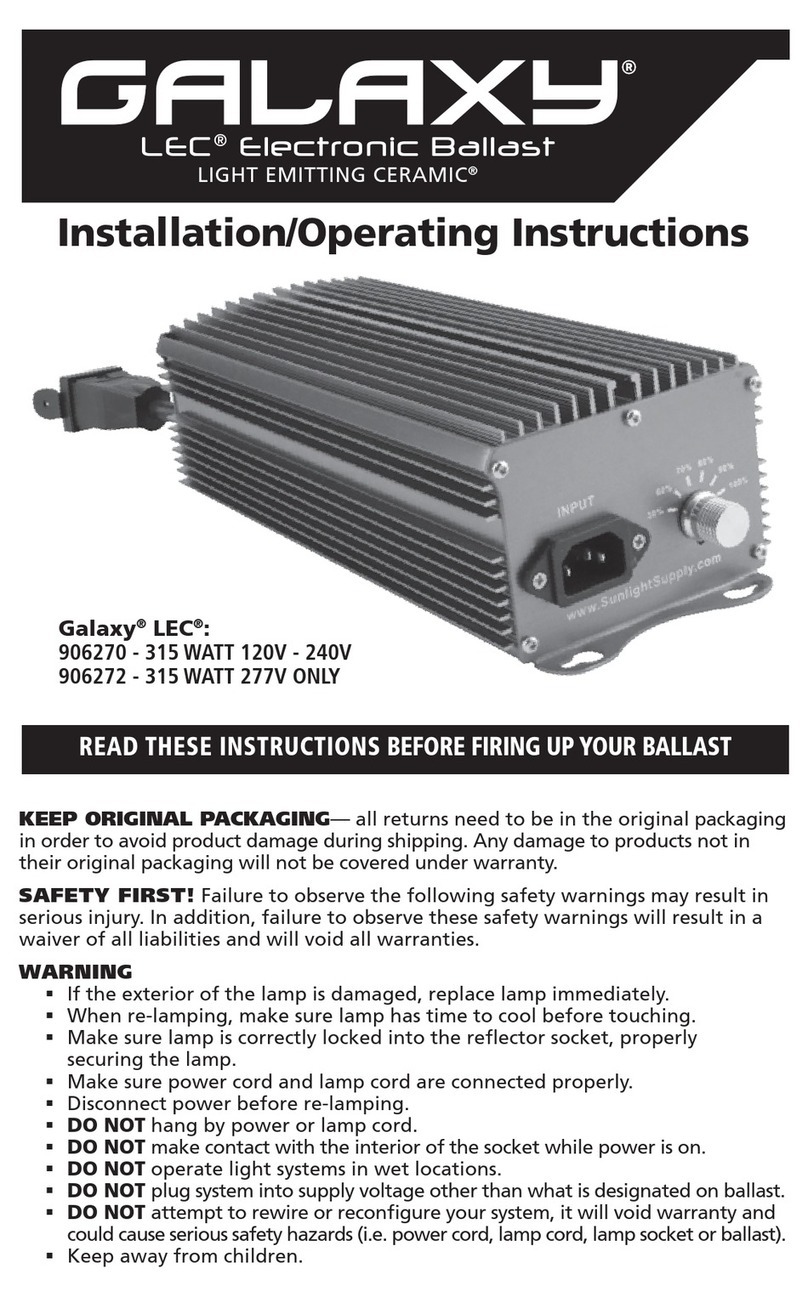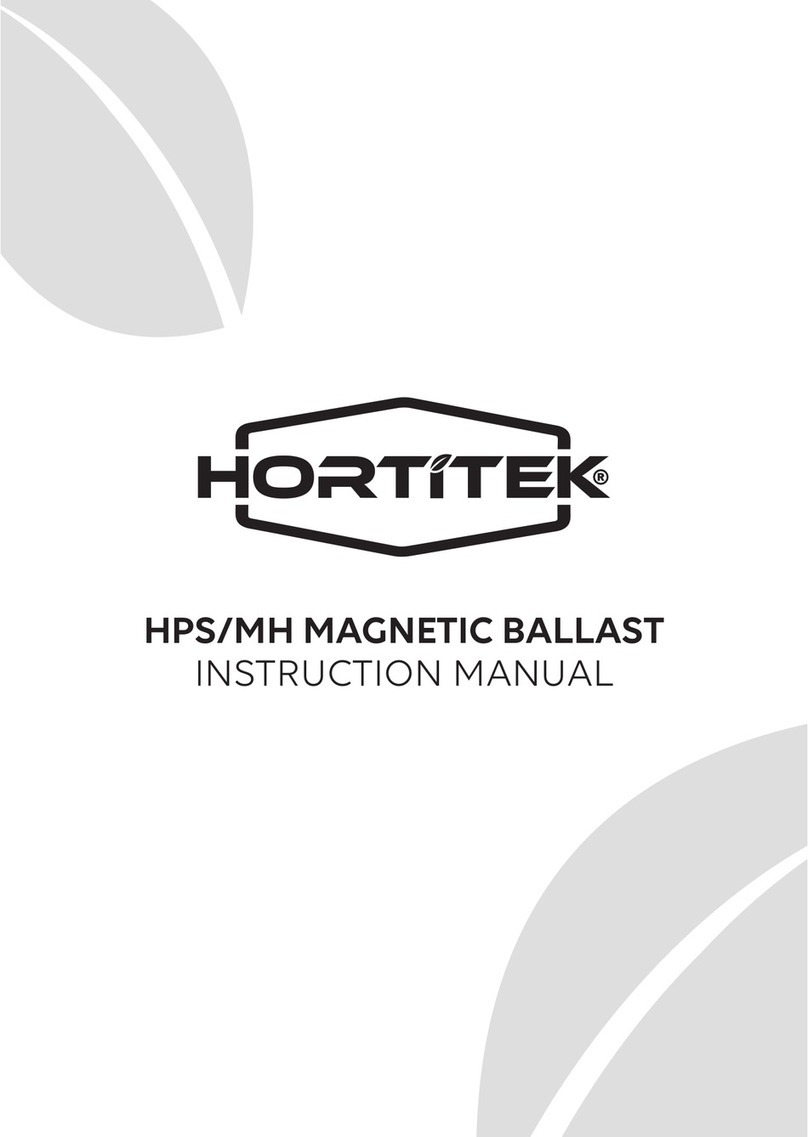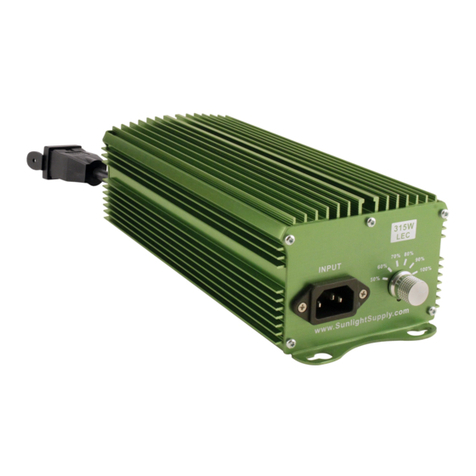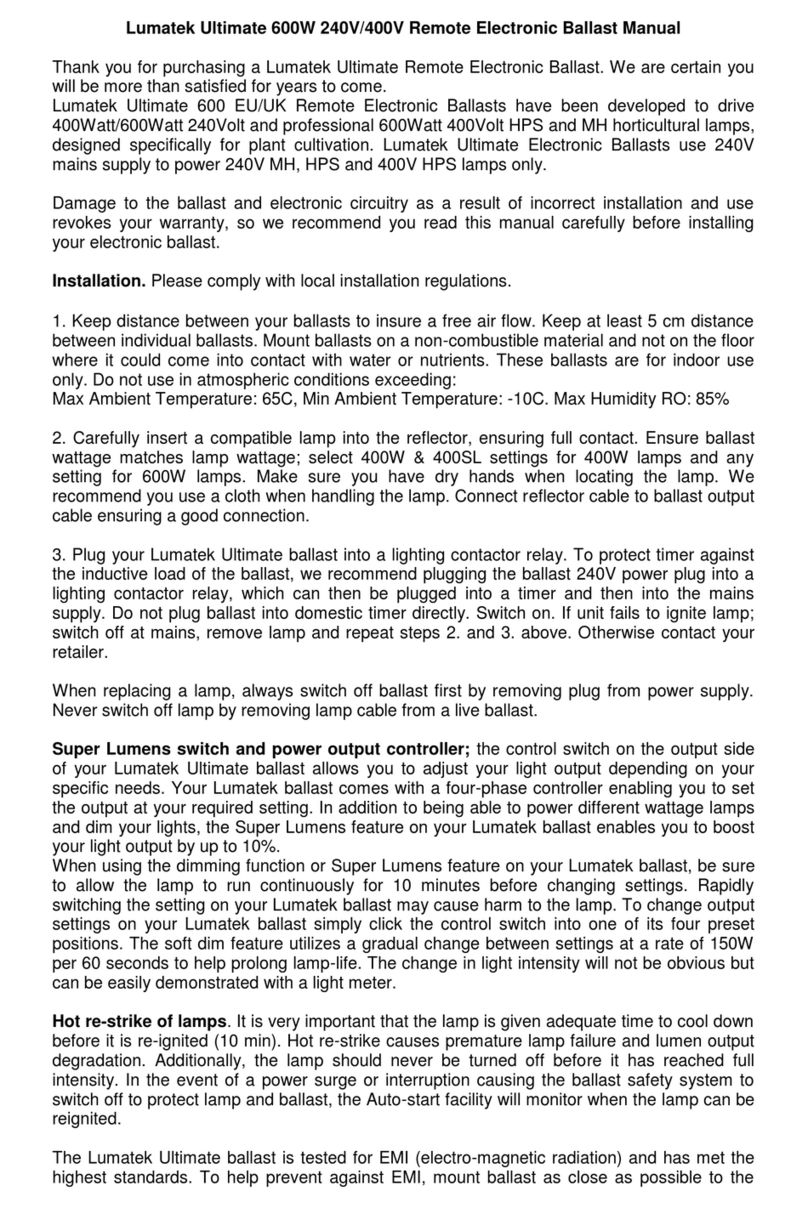
- 175 WATT - 50 FT.
MAXIMUM DISTANCE FROM ABOVE
GROUND BALLAST BOX TO LAMP USING
12 GA COPPER WIRE:
MERCURY VAPOR - 50,100,175 WATT - 100 FT.
METAL HALIDE - 70 and 100 WATT - 20 FT.
HIGH PRESSURE SODIUM - CONTACT HADCO
MOUND UP EARTH
AROUND HOUSING
FOR DRAINAGE
WIRING SPLICE
COMPARTMENT
(MUST BE POTTED)
LIQUID TIGHT
CONNECTOR
(BY OTHERS)
CONDUIT
(BY OTHERS)
HOUSING FLANGE
PLACE 3" OF GRAVEL
AROUND HOUSING FOR
DRAINAGE
HOUSING
32000855, revision I
100 Craftway, P.O. Box 128
Littlestown, Pennsylvania 17340-0128
Phone: 800-331-4185 Fax: 717-359-9672
INSTALLATION INSTRUCTIONS:
FOR IBM & IBH SERIES
INGROUND BALLAST BOXES
page 1 of 2
SAFETY WARNING:
ALWAYS TURN FIXTURE OFF/DISCONNECT POWER AND ALLOW TO COOL BEFORE
PERFORMING ANY MAINTENANCE, INCLUDING RELAMPING AND CLEANING!
This fixture can become very HOT! The fixture housing and lens, especially if it is glass, can become hot enough
to blister hands. Attention should be paid to where the fixture is mounted, particularly if it can be touched by
children or pets. To help prevent premature failure, decreased performance, overheating and risk of fire, keep
fixture and lens clean and free of leaves, mulch, debris and mineral deposits from water. The fixture and lens
can be cleaned using a soft cloth and a solution of mild liquid soap and warm water. Wipe clean and dry with a
soft, lint-free dry cloth. Avoid polishing fixture or lens.
This fixture is intended for installation in accordance with the National Electrical Code and local code
specifications. Failure to adhere to these codes and instructions may result in serious injury and/or damage
to the ballast and void the warranty. These instructions do not purport to cover all details or variations in
equipment, nor to provide for every possible contingency related to installation, operation, maintenance,
or mounting situation. Should specific problems occur that are not addressed by these instructions, contact
your Sales Representative or distributor for assistance. Retain these instructions for future reference.
INSTRUCTIONS PERTAINING TO A RISK OF FIRE OR INJURY TO PERSONS
IMPORTANT SAFETY INSTRUCTIONS - SAVE THESE INSTRUCTIONS!
WARNING - Lamp gets HOT quickly! To reduce the risk of FIRE OR INJURY TO PERSONS:
Do not operate fixture with a missing or damaged lens/lens assembly.
Contact only switch or plug when turning fixture on or off. Do NOT touch hot lens or housing.
Turn off or unplug fixture and allow to cool before relamping. Keep lamp away from combustibles.
Do NOT touch lamp with bare hands at any time, use a soft cloth as oil from skin may damage lamp.
